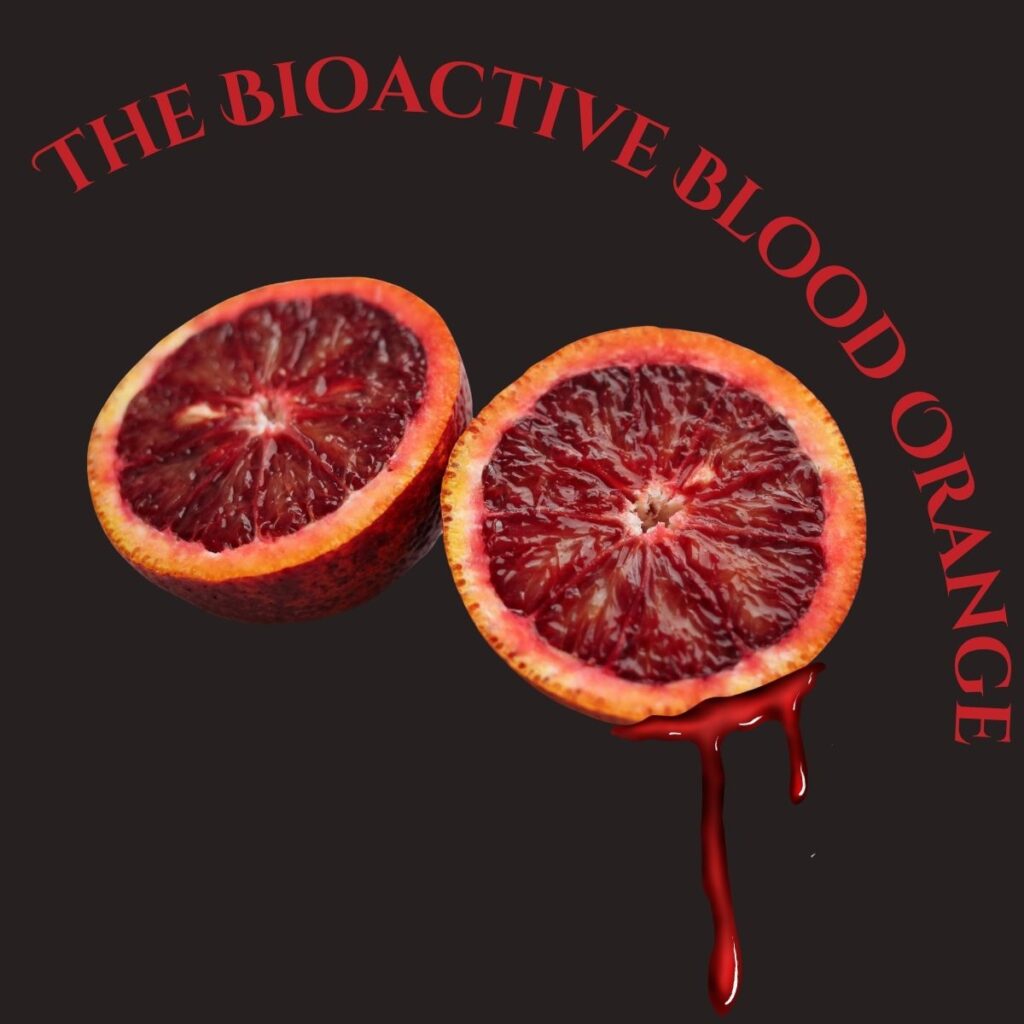The Blood Orange (Citrus sinensis variety) is a variety of regular oranges with blood red pigments. They have a sweet-tart flavor with subtle notes of raspberry.
These pigments from anthocyanins are not so common in regular oranges and are responsible for added antioxidant health benefits.
Originating as a natural mutation in the Mediterranean—particularly Sicily—Blood Oranges are thought to have been cultivated since at least the 17th century.
Blood Oranges also have higher levels of vitamin C, so are beneficial for collagen production and immunity support.
In traditional medicine, blood oranges have been valued for their high vitamin C content and antioxidant properties, often used to boost immunity, aid digestion, and improve skin health.
Vitamin C and anthocyanins have synergistic effects in the diet and increase the overall bioavailability and effect when found in food form.
Ceramides are also present in Blood Oranges, compounds that play a role in cellular health and healthy skin aging.
The other main health-promoting phytochemical present in the pool of Blood Orange bioactive compounds are the hydroxycinnamic acids.
Hydroxycinnamic acids are widely distributed phenolic compounds in plants and are also largely due to the difference of flavor of Blood Oranges.
Hydroxycinnamic acids have shown efficacy in promoting cardiovascular health and cellular health in cancerous conditions.
Blood Oranges are also used to produce an essential oil for aromatherapy that is similar to Sweet Orange EO but with a more bright and tart fragrance.
Through scientific investigation, Blood Oranges have been found to exhibit antioxidant, anti-inflammatory, anticancer, cardiovascular-protective, antimutagenic, cholesterol-lowering, antimicrobial, and gut-supportive activities, primarily due to their content of vitamin C, anthocyanins, flavonoids, carotenoids, and organic acids.
Bottom line: Blood Oranges are not only visually beautiful in dishes, but the consumption of red fruits like the Blood Orange has been recommended as an important contribution to a healthy diet.
*This content is for informational and educational purposes only. It is not intended to provide medical advice or to take the place of such advice or treatment from a personal physician.
The Bioactive Blood Orange-

